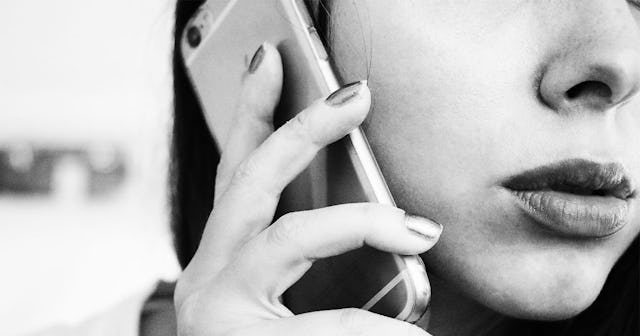I Am A Contact Tracer, And You Don't Want To Hear From Me

“I can’t tell you who tested positive. I can only tell you approximately when you were exposed,” I say.
“What? How am I supposed to know if I could be infected if you won’t tell me who may have infected me?” the caller replies.
“Your name and information were given to our public health department as a person who was in contact with an individual testing positive for coronavirus. For privacy reasons, we can’t tell you who that person is. I’d like to get some information from you, provide you with quarantine instructions, let you know what to do in case you become sick, and answer questions you may have.”
Most of the people I call are exposed to the disease by a relative or friend. Frequently they have already been notified via text or call or grapevine or social media that their acquaintance has tested positive.
Once someone in our county tests positive, the infected individual is notified and instructed to isolate — stay away from everyone for ten days after the start of their symptoms AND until they have been fever free (without medication) for three days. Isolating can be challenging in small living spaces. Most people isolate in one room in their house. The public health goal is to keep people who have tested positive (case) and people who have been exposed to people who have tested positive (contacts) away from the community for about 14 days.
Tomasz Olszewski/Reshot
We let our contacts know they should call their medical provider and consider getting tested if they start to develop a cough, fever, shortness of breath or other symptoms. We email or mail out instructions for isolation (sick people), quarantine (people without symptoms who have been exposed), and send them work exclusion letters for their employers if requested. We gather the contact’s demographic information and take a brief medical history. We discuss the basics of the disease and the need to quarantine for 14 days from their date of exposure (the last time they were in contact with the individual(s) who tested positive). They are asked not to leave their house except for a medical appointment, regardless of whether they develop symptoms. We know asymptomatic people can spread the disease.
“Can I walk my dog?”
I’m sorry, no. You should not leave your home.
Contract tracers are being hired en masse right now by private entities subcontracted by states, states themselves, and non-profit organizations. Estimates say the U.S. will need to hire between 100,000 and 300,000 people to contact trace during the pandemic. Generally, state or county public health departments or their contracted entities are looking for people with great customer service skills, some medical knowledge, an understanding of patient confidentiality and privacy, and a working knowledge of COVID-19.
Some contact tracers interview the initial positive case and gather information: Who were they with 48 hours before they started to have symptoms? Where did they go? What did they do there?
Others follow up with the contacts of those infected. A contact is someone who came within six feet of, AND spent more than 15 minutes with, a confirmed case. It doesn’t matter if they were wearing a mask, you were wearing or mask or both were wearing a mask. Within six feet for fifteen minutes or more is the criteria for exposure.
Matthew Henry/Burst
The county I work for has a dedicated COVID-19 line where people can get access to information and resources – including testing. Some people need a lot of support to quarantine or isolate; others have their own network of friends and family who can drop off food, medicine and walk their dog without making contact.
We follow up – but not every day. Part of our follow up is determining if, at any point during quarantine, they have become symptomatic. If they do show symptoms and test positive, they are often reassigned in the database as a confirmed case and the process of sharing information and contacts starts over.
If we’re unable to reach a case or their contact via phone or text or email after several attempts, we send a letter. If your county department of public health is calling, texting or emailing, please respond right away.
Most of the people I talk to are cooperative and friendly, but people can be anxious about getting sick, grieving the loss of loved ones to the disease, and concerned about their livelihood. The things I hear while making these calls about the impact COVID-19 is having in my community are heartbreaking.
We’re all trying to minimize our losses and stay healthy and safe, and it takes all of us following the public health directives to decrease spread in our communities. This article from The Salt Lake Tribune provides a fascinating look at how it spreads, and what precautions you can take to avoid it.
Remember to avoid the three C’s:
CLOSED spaces with poor ventilation
CROWDED places
CLOSE contact with others
Please, wear a face covering in public spaces, wash your hands and stay safe. I really don’t want to have to call you.
This article was originally published on